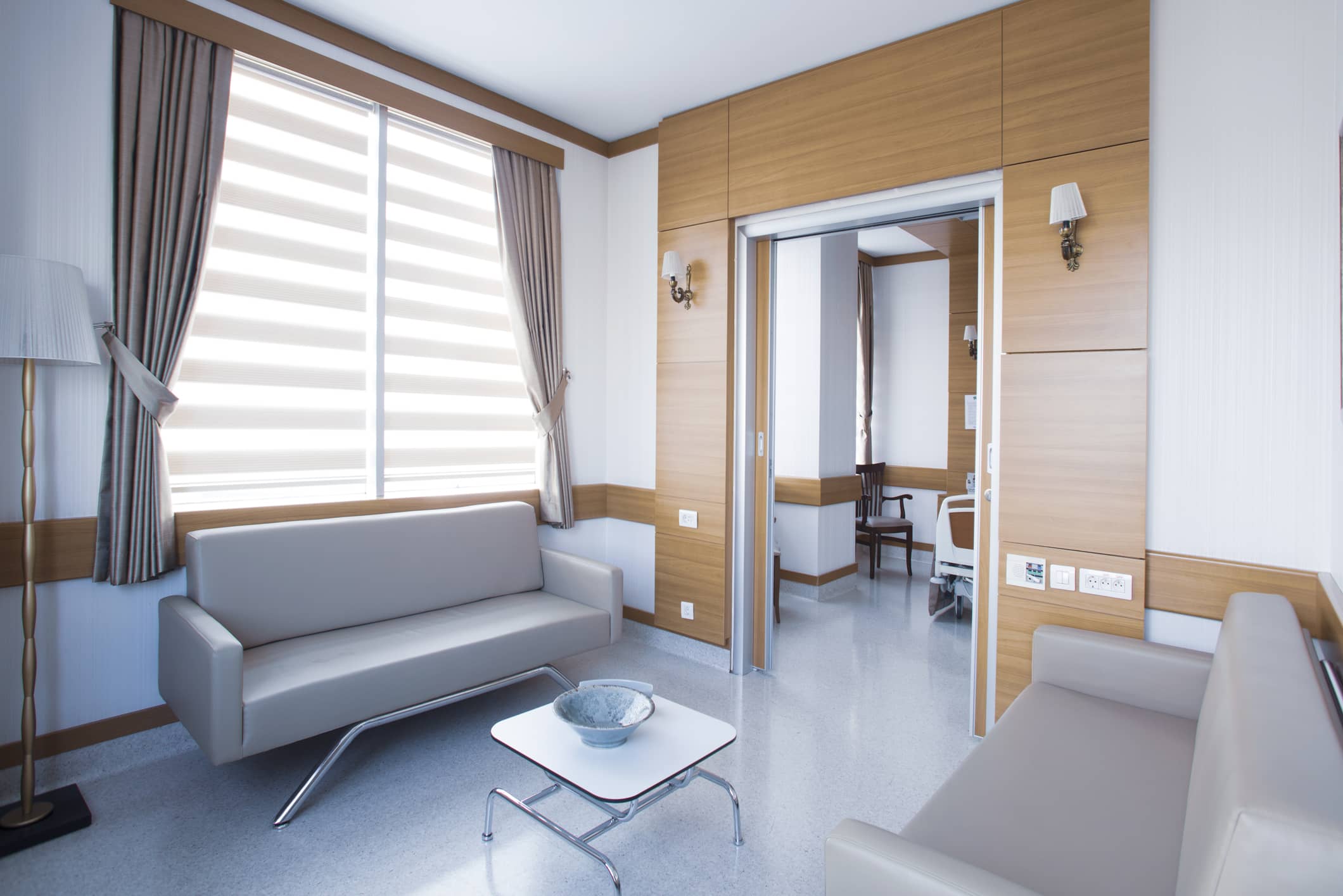
Creating Healing Environments Through Better Hospital Design
What if the place everyone expects will make them better actually makes them sick instead? And it’s not because of nosocomial infections.

Peter Bardwell, FAIA, FACHA, reports that healthcare facilities are measuring cleanliness, air quality and a connection to nature and natural light to promote healthy environments.
There is a growing body of evidence that shows patients, as well as employees, can suffer ill effects from being in the hospital because of the building design itself, said Ellen Taylor, AIA, MBA, EDAC. “In 2004 there were about 650 credible studies that linked different aspects of the build environment with patient outcomes. In 2008, there were more than 1,000 credible studies.”
Taylor is a research associate for the Pebble Project, a major initiative of the Center for Health Design and a decade-long effort which studies how hospital design affects patients. “For many years, the patient wasn’t considered in the process. Now, we’ve started to see this trend towards hospitals that are friendlier and have what is called a healing environment with features that are designed to reduce stress for patients and staff.”
Peter Bardwell, FAIA, FACHA, principal at Bardwell and Associates in Columbus, Ohio, added, “Any building has physiological, psychological and social effects and in the case of health facilities there is a tremendous move on measuring cleanliness and air quality and a connection to nature and natural light to help promote healthy environments both for patients and staff.”

John R. Pangrazio, FAIA, FACHA, reports that healthcare workers have a high incidence of adult-onset asthma, and the choice of construction materials can make a difference in mitigating these kinds of conditions.
Achieving a healthy environment also opens up a lot of opportunities for hospitals to use architecture to make changes in specific areas like building materials, says John R. Pangrazio, FAIA, FACHA, a consulting partner at NBBJ and a board member for the American Institute of Architects/Academy of Architecture on Health (AIA/AAH). “Healthcare workers are more likely than any other profession to acquire adult-onset asthma. It’s believed due to their exposure to the 11 known asthmagens that occur in healthcare settings. So, specific materials of the physical environment have a significant role to play, as well.”
Other changes in design and build could improve air quality in hospitals while helping to cut down energy consumption – an area of real concern, said Pangrazio. “Hospitals are tremendous users of energy and healthcare systems are seeing their energy costs skyrocketing.”
Saving energy was one of the top priorities for the newly opened UMass Memorial Ambulatory Care Center (ACC), said Dana E. Swenson, PE, MBA, who is vice president and chief facilities officer at UMass Memorial Health Care. “Even in the early design phases, the need to build factors into our design and construction that will make the building a leader in energy and environmental design were shared with the architect and the contractor.”

Dana E. Swenson, PE, MBA, says that hospitals need to consider energy efficiency and environmental design early in the process.
Swenson says the aim was to get LEED (Leader in Energy and Environmental Design) Silver Certification for the 260,000-square foot building, which led to, “...using energy conservation measures on everything from motion detectors turning lights on and off to variable frequency drives on the air conditioning and pump systems.” The result, said Swenson, is that,”The whole building was designed to be as energy efficient as possible.”
The ACC was also designed to build in elements that would create a healthy environment. Patients helped determine everything from the location of rooms to walk distances, even color schemes and artwork. The result? “All exam and waiting rooms are open to the outside, getting the light and the views. The infusion room in the oncology department looks out over a lake,” explained Swenson. “Patients have views, comfortable settings, aesthetic warmth and the feeling of openness.”
While more hospitals are moving in the direction of creating healthy, healing environments, there is still some resistance within the healthcare industry itself. “Many healthcare executives are naturally risk averse, understand the risks they have traditionally faced and are more comfortable with traditional solutions,” explained Pangrazio, who quickly added that this will change. “When there is overwhelming evidence that the risk of doing things the same is greater than the risk of change, then change will become the safer solution.”
Making changes in design-build may seem even riskier in light of recent healthcare reform and the down economy. Both hit the healthcare construction industry hard: construction in the healthcare sector declined by 36 percent from 2008 to 2009, according the Dodge Report National Forecasts and Trends. But that may be changing, too. Healthcare may become one of the few “bright spots” in 2010 according to the McGraw-Hill Construction Outlook Midyear 2010 Report.
And for those who worry that healthy design is more costly, the Pebble Project continues to build its case that that’s just not true. “There is a huge amount of research that you can point to that, while it may be an investment up front, the long-term cost is going to make it worthwhile in the end,” said Taylor. “Operating costs of the facility are so far beyond capital costs that you can easily make a business case.”
In the meantime, change will continue in healthcare, said Pangrazio. “The only constant in healthcare is change. The future of healthcare is in enhancing and promoting health, not just healthcare. And pioneering healthcare leaders will continue to establish new ground rules for the coming changes in healthcare and design. “
